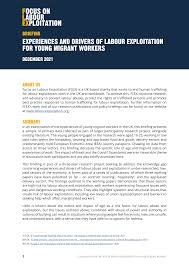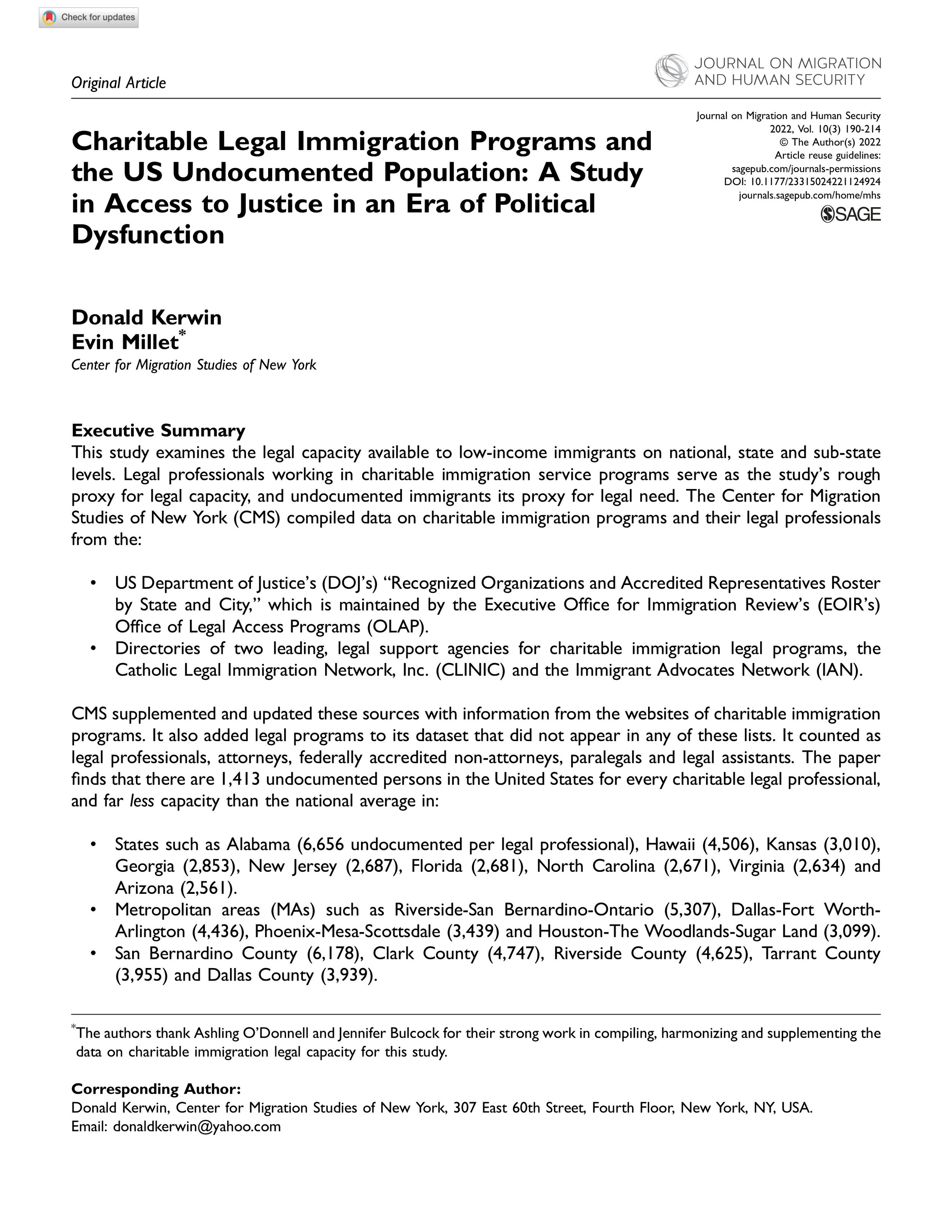By Deborah M. Weissman, Angelina Godoy, Havan M. Clark
Immigration enforcement has long served as an indicator of the prevailing visceral fears and loathing toward the Other. The foreign is always suspect. Foreigners in great numbers are especially suspicious. These developments are historically tied to the conventions of colonialism, expanded as a function of foreign policy, and to be sure, ideology.' By the mid-2010s, the Global South was characterized as "shithole countries," populated by people who were terrorists, rapists, murderers, and corrupt drug dealers. According to former President Donald J. Trump, immigrants "aren't people. The[y] are animals, further describing them as "bad thugs and gang members." These representations have shaped a retributive agenda and have served to create a structure with roots in federal policies and branches in localities throughout the country through which to expel noncitizens. Deportation is a legal concept about which much has been written.' But it is more complicated. For noncitizens, forced expulsion is a lived experience occurring in time and space-an act against the body, mostly black and brown bodies. In this Article, we part ways with the well-established narratives of deportation and the punishment/non-punishment paradigm to conceive of deportation not only as a legal concept, but as a physical act-the final act-that is, the culmination of the immigration enforcement dragnet. The physical removal of persons from the United States requires a complex system comprised of aviation networks and their various components, airports and airplanes, hangars and flight crews, and an array of physical restraints to intimidate, punish, or subdue deportees.'" We examine this infrastructure to illuminate the circumstances of expulsion and the egregious rights violations often suffered by deportees-violations that are almost always hidden from public view. Part I examines the full dimensions of deportation as a legal concept whereby courts readily admit the harms of expulsion while simultaneously deny its character as a form of punishment." The courts' construction of deportation as a nonpunitive sanction to which a range of constitutional procedural safeguards are not applicable serves to conceal the violence that occurs and distracts from the physical abuse and maltreatment associated with the final act. The legal treatment of deportation elides what, as Jacqueline Rose has written, is conveyed by "the technical term for the returning of migrants to their country of origin [that] is 'refoulement' (to push back or repulse) which also happens to be the French word for the psychoanalytic concept of repression. Part II then describes deportation as an act by which the body is seized and ultimately transported to airports and boarded onto airplanes''-sites previously not considered in the scheme of the immigration removal system's apparatus." It describes the heretofore hidden machinery of the Immigration and Customs Enforcement ("ICE") Air's network of mass deportation and further describes the perils upon removal occasioned by ICE flights.' Part III examines the "legal" trajectories of forced expulsion. It demonstrates how hostility toward immigrants has given rise to an ever-expanding deportation apparatus by which growing numbers of immigrants, including those seeking shelter from persecution, are stripped of legal protections. It chronicles the subversion of legal processes that result in a heightened risk of wrongful deportation and thus by which immigrants reach the point of the final act of removal." It also illuminates how the ICE Air machinery, which executes deportation orders arising within an unfair system, is complicit in the various legal violations by giving effect to such orders and further curtailing whatever rights remain at the moment of the final act of deportation Part IV takes up concerns largely unaddressed in legal scholarship: the detailing of human rights abuses on airplanes and airports-sites that function as the terminal instrumentalities of banishment. It describes the physical and psychological abuses that deportees experience during the final act of removal to demonstrate the urgency of immigrant rights advocacy at these sites. It then identifies the violations of international human rights treaties committed by the United States.25 We do so mindful that invoking human rights law in an effort to reframe the discourse occurs at a time when the question of whether these norms have any relevancy in the United States is very much at issue. The issue of the relevancy of human rights-or lack thereof-is not a new concern, to be sure. As Jack Goldsmith stated over two decades ago, "We can now better understand how and why the United States perpetuates the double standard. The explanation is not subtle. The United States declines to embrace international human rights law because it can." However, as Part IV argues, immigrants' rights advocates have nonetheless seized on international norms that apply locally and globally to realize an expanded vision of justice when addressing the harms wrought by ICE Air's deportation machinery. The need to call attention to U.S. exceptionalism with regard to human rights requires that scholars and activists seek their implementation as a means to encourage a discourse of hope and an expectation of realization. Stated otherwise, "all theory must end in practice or come to nothing as theory." Part V examines airports and airplanes as sites of resistance in the context of immigration federalism debates. We build on the literature that has called attention to the importance of political geography and immigration devolution policies to underscore the importance of new forms of local activism as a means to assert immigrant rights. Even as growing numbers of localities craft policies to protect immigrants, forming a first wave of resistance to federal anti-immigrant policies, a second wave of subnational advocacy is emerging, seeking to contest both the mechanisms by which people are drawn into the system of immigration enforcement and the institutions which detain them. It is in this context that we identify the campaigns to disrupt the aviation deportation machinery, and the importance of focusing on the local as a means to ensure accountability for individuals whose human rights have been violated. Deportation is a term frequently associated with nativist sentiment and revulsion for those who appear foreign, as well as a type of "cleansing" as consequence of aggressive annexation of territory. 4 The efforts to accelerate the removal of noncitizens from the United States has reconfigured the historic narrative about the nation's relationship with immigration and immigrants. Concerns for the humanity of immigrants requires attention to all facets of the injustices of deportation, including the sites of the final act of removal. As we demonstrate, this may be accomplished through a variety of political and legal strategies designed to call attention to the ways that deportation violates the protection of rights that exist at the very local to the very global levels of law. Notwithstanding our descriptions and analyses of innovative and important anti-deportation campaigns to mitigate the deliberate infliction of human suffering on immigrants, we do not suggest that these strategies ensure success. In the face of the deportation dragnet machine and the aviation networks that are hidden from the public, it would be presumptuous to suggest victory. What this Article offers is a way of understanding and modeling new forms of resistance at sites previously overlooked-resistance that must stand in for the protection of rights until the structures of immigration laws and processes can be humanely reset.
Hofstra Law Review Volume 49 Issue 2 Article 5 12-1-2021, 63 pages





















